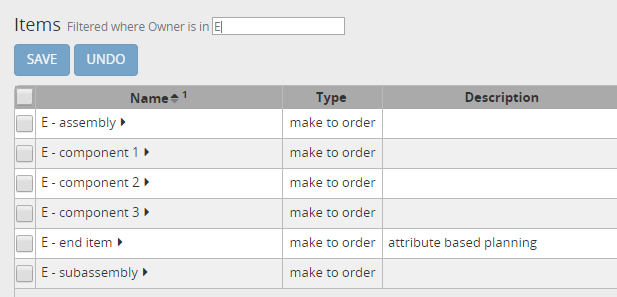Make-to-order and make-to-stock
FrePPLe can model complex supply chains with make-to-order, make-to-stock and configure-to-order characteristics.
In this example we demonstrate some typical examples:
The item A has a complete make-to-stock supply path. Its subassembly and raw materials are all planned in make-to-stock mode.
The item B has a complete make-to-order supply path. All of the subassemblies and raw materials are specific to the sales order.
The item C has a configure-to-order supply path. It combines make-to-order manufacturing operations for the final production operations with some make-to-stock components and subassemblies.
- The item D shows serialized production. The end items are managed and planned in make-to-stock mode, but the manufacturing operations are planned in make-to-order mode with serialized production batches that move between production stages.This is a common scenario in pharmaceutical or chemical industries where full traceability of the production is important.
The item E shows an attribute-based supply path. The finished item can be sold in different colors (or size, or any other attribute) and the supply paths per color need to be kept seperate.
Check this feature on a live example
Download an Excel spreadsheet with the data for this example
Here is a step by step guide to explore the example:
- At first sight the supply paths of all products look identical: supply path for item A, supply path for item B, supply path for item C, supply path for item D and supply path for item E
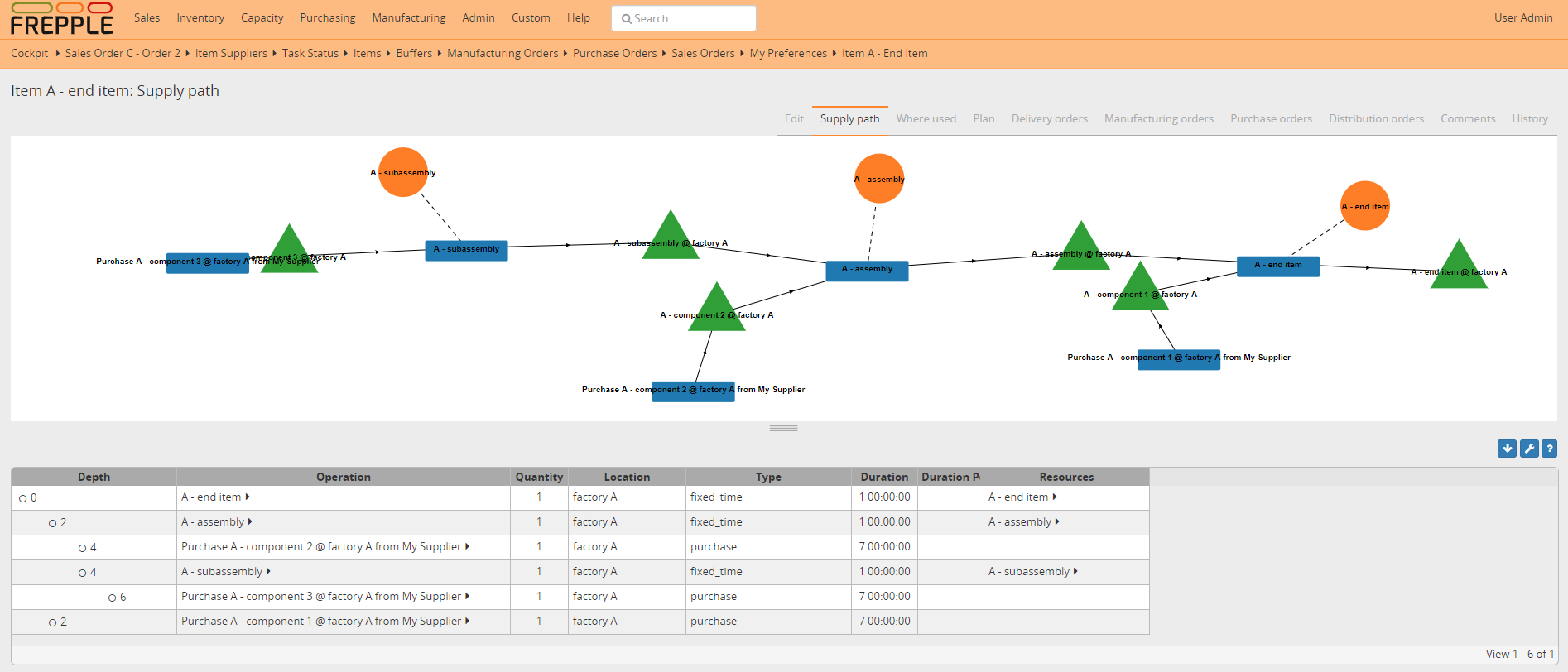
The key tables to study the specifics of this model are:
- The type field in the item table can be set to “make to order” or “make to stock”.The type is set to “make to order” for all items where inventory, production and consumption is managed per batch. Material of different batches is planned seperately and can’t be mixed.The type is set to to “make to stock” when the inventory, production and is managed aggregated across all demands.
- The batch field in the sales order table specifies which items can be used to meet the demand. Cases B, C and E have batch information on the sales orders that needs to be passed on to manufacturing orders and purchase orders.
- The batch field in the buffer table allows to specifies to specify stocks by batch.
- The item A is a make-to-stock product.
In the input data all items in the supply path are marked “make to stock”
A. Also, the sales orders don’t have the batch fieldBfilled in.In the output plan, the manufacturing orders and purchase orders generated to meet the demand all have an empty batch field
C.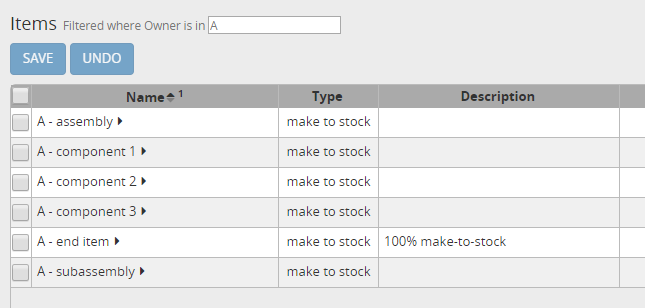



- Item B is a make-to-order product.All items in the supply path are marked “make to order”. The batch field on the sales orders is set to the sales orders’ unique name.When frePPLe generates the plan, the batch number specified on the demands is automatically propagated to all manufacturing orders and purchase orders in the supply path.Material cannot be shared/exchanged between batches. In the buffer table you can see there is inventory of component 1, but it can’t be used because it’s reserved for another order “B - order X”. (Excercise: change the batch number to one of the sales orders of this end item, regenerate the plan, and verify that this time the stock can be used and we have one less purchase order).
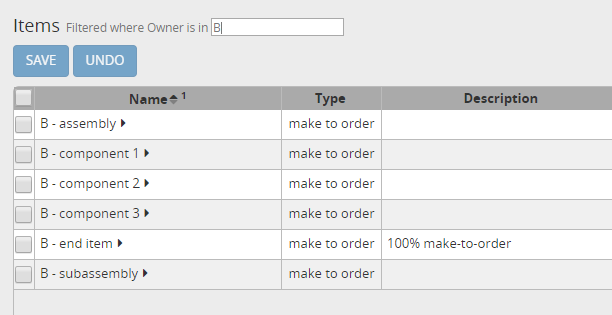



- Item C is a configure-to-order product.The end item and the assembly are produced in make-to-order mode. The batch information is propagated from the sales orders to the manufacturing orders and the purchase orders of component 1.The other parts of the supply path are planned in make-to-stock mode. No batch information is seen on these purchase orders and manufacturing orders.
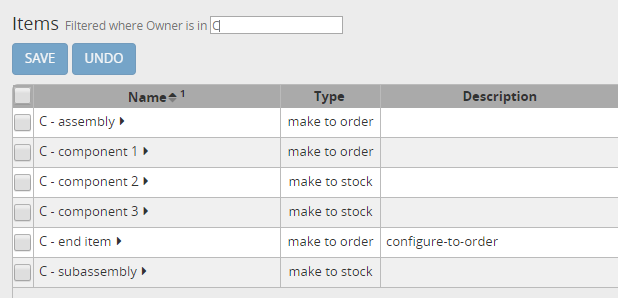



- Item D shows serialized production.The final product is make-to-stock, but part of the supply path consists of “make to order” items. The subassembly, assembly and end item operations are linked to each other with a batch number that is automatically generated by frePPLe.




- Item E demonstrates attribute-based planning. The end item E is available in 2 colors: green and yellow.The green version of item E has enough inventory, and no manufacturing orders or purchase orders are generated.The inventory of the yellow item E is running low, and we need to launch another production batch. The batch field on the manufacturing order tells us the color of the item we need to produce.
